| |
Zona
Universitària |

|
20-01-1975
As the name
suggests, this large area is a University Campus designed in the 50's
to solve space problems at Barcelona University and Universitat Politècnica
de Catalunya.
Future interchange
with L9
|
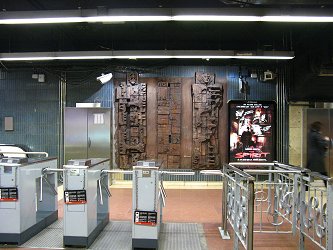
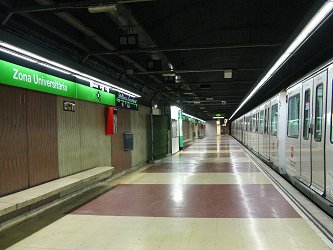
|
| |
Palau
Reial |
 |
20-01-1975
The 'Royal
Palace' is a small palace, bought by Gaudí's patron Güell, who
gave it to King Alfons XIII as a residence in Barcelona.
|
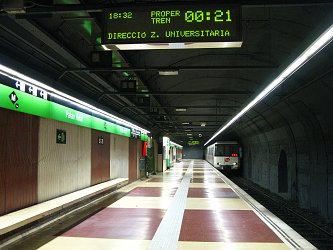
|
| |
Maria
Cristina |
 |
20-01-1975
Square named
after Maria Cristina of Austria, Queen of Spain, wife of King Alfons XII,
from 1879 to 1885.
|
|
| |
Les
Corts |
|
20-01-1975
One of Barcelona's
10 city districts whose name does not refer to any courts, but to cattle
enclosures in that area in the old days.
|
|
| |
Plaça
del Centre |
|
20-01-1975
Although
the name might suggest something else, it has only become a centre recently,
situated on the borderline between the districts of Sants-Montjuïc
and Les Corts.
|
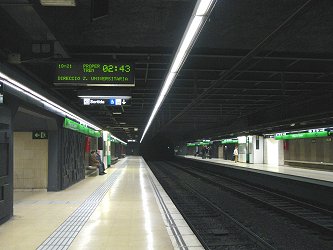
|
| |
Sants-Estació
|


|
(1975) -
Transfer to L5 - Originally called 'Roma-Est. RENFE' it was renamed when
the new modern central railway station was built for the Football World
Championship in 1982 in Spain.
|
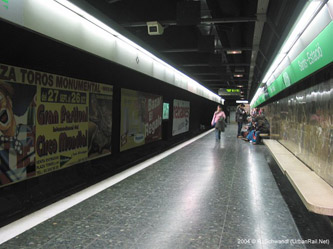 2004
2004
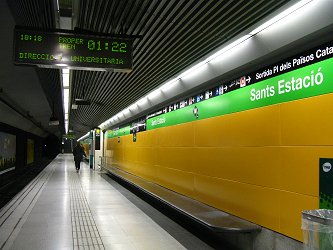 2009
2009
|
| |
Tarragona
|
|
20-01-1975
Street named
after the Catalan city of Tarragona, a Roman settlement, Tarraco, actually
capital of the Roman province Tarraconensis, which covered more than half
of the Iberic peninsula.
|
|
| |
Espanya
|


|
15-07-1975
This huge
round square was designed for the 1929 exhibition which took place at
the Fair Centre nearby.
|
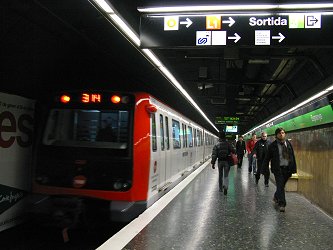
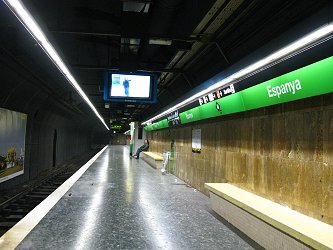
|
| |
Poble
Sec |
|
15-07-1975
Originally
called 'Parlamento' after an adjacent street, it became 'Poble Sec' in
the 80's which is the name of the neighborhood between Avinguda Paral.lel
and the Montjuïc mountain. The name actually means 'dry village'
, maybe because it's higher and therefore cannot be flooded.
|
|
| |
Paral.lel |
 |
17-06-1970
See L2 for
details. From 1975 until 1982 passengers had to change here between line
3 and line 3B due to different systems of power supply. The former platforms
of line 3B are now used as a terminus for L2 (Purple Line) making it the
most comfortable transfer station of the network.
|
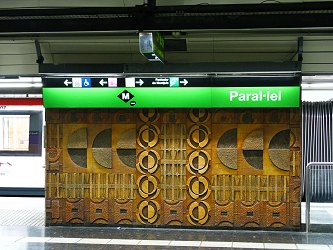
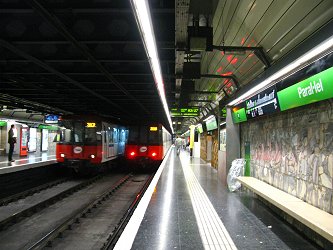
|
| |
Drassanes
|
|
14-12-1968
Substituting
the former station of 'Fernando' further up the Rambla, this station is
called after the medieval shipyard next to it. Originally called 'Atarazanas'
- 'Drassanes' in Spanish.
|
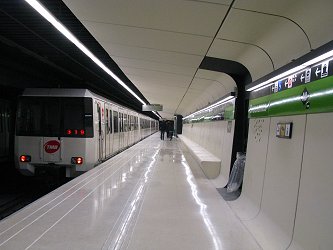
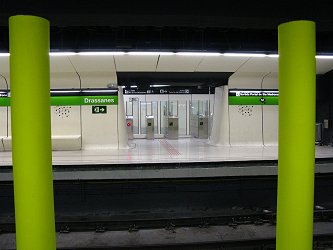
|
| |
Liceu
|
|
05-07-1925
Called after
the adjacent opera house 'Liceu' which was built by J.O. Mestres and M.Garriga
i Roca and originally opened in 1847. It burned down for the first time
in 1861 and again in 1993, being currently rebuilt.
|
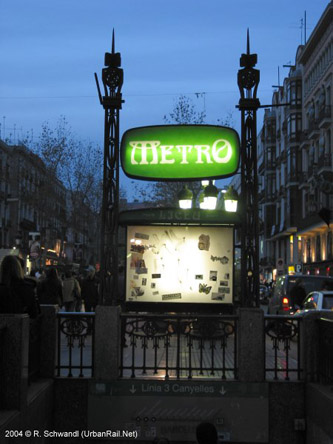
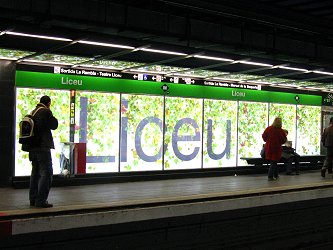
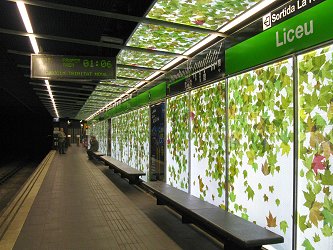
|
| |
Catalunya |




|
30-12-1924
Huge central
square built as a bridge between old and new town and obviously named
after the country of which Barcelona is the Capital. There are actually
4 stations underground: L1, L3, the terminus station for the FGC urban
and suburban lines (5 platforms) and a RENFE Suburban Rail station situated
between the two L1 platforms.
|
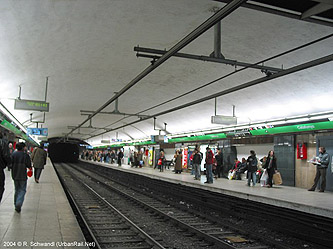
|
| |
Passeig
de Gràcia |



|
30-12-1924
From this
station, which was originally called 'Aragón', a branch went down
Via Laietana to 'Correos' until Line 4 (the yellow line) became 'independent'
in 1973. Today this is the only station in Barcelona serving three metro
lines (though the L3 station is quite a walk from L2 and L4). There is
also a RENFE Suburban Rail underground station. See L2 for more information.
|
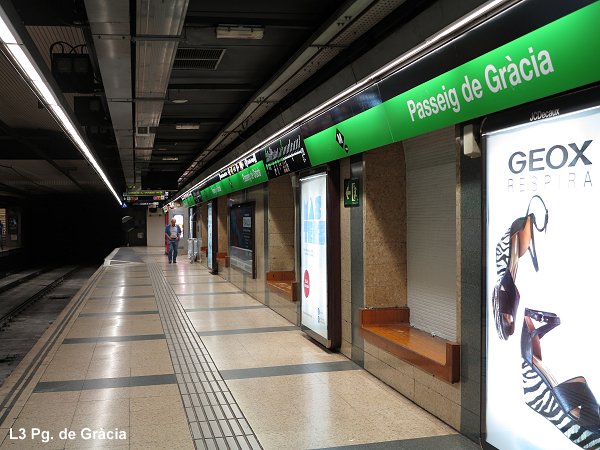 |
| |
Diagonal
|



|
30-12-1924
Ildefons
Cerdà designed this avenue diagonally through Barcelona. The upper
and lower parts of Av. Diagonal are now served by trams, with the two
separate networks to be linked in the mid-term future.
|
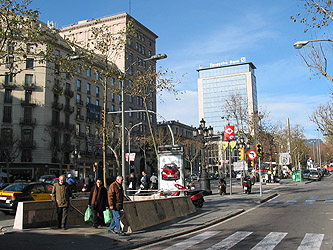
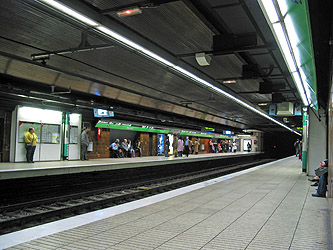
|
| |
Fontana |
|
01-05-1925
Before the
area was built up, there was an estate called 'La Fontana' (the fountain),
not existing any longer.
|
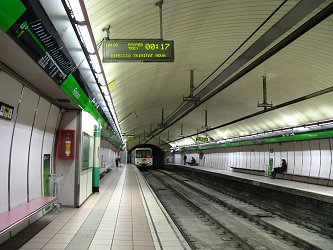
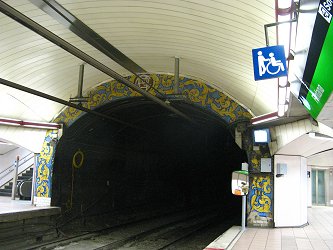
|
| |
Lesseps
|
|
30-12-1924
Square dedicated
to Ferdinand-Marie de Lesseps, whose company financed the construction
of the Suez Canal, and who was consul of France in Barcelona from 1842
to 1848.
|
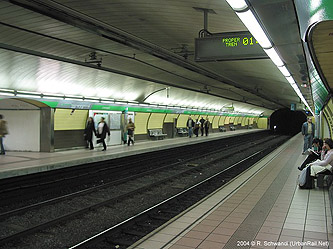
|
| |
Vallcarca
|
|
06-11-1985
The name
of this neighborhood actually means 'a very steep valley' - and that's
what it is (between Carmel and Putxet).
|
|
| |
Penitents
|
|
06-11-1985
Area called
after places of repentance. Some hermits established themselves around
the neighborhood in the 19th century.
|
|
| |
Vall
d'Hebron |
 |
06-11-1985
This neighborhood
which houses Barcelona's biggest hospital complex, has got its name from
an ancient monastery, Sant Jeroni de la Vall d'Hebron, referring to the
biblical valley of Hebron in Palestine.
Since July
2010, interchange with L5
|
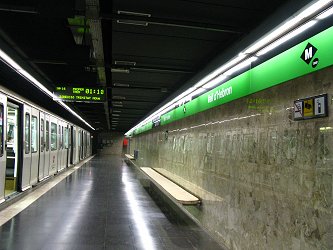
|
| |
Montbau
|
|
06-11-1985
New neighborhood
in the 'Hebron Valley', part of the district of Horta-Guinardó. The
name could be derived from an ancient house called Gombau.
|
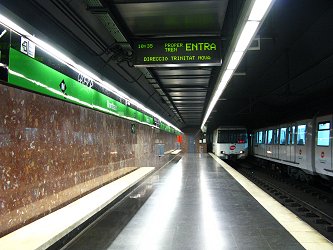
|
| |
Mundet
|
|
21-09-2001 |
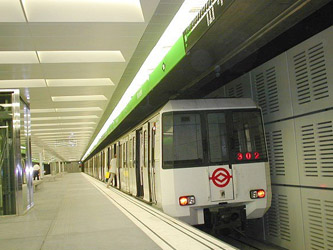
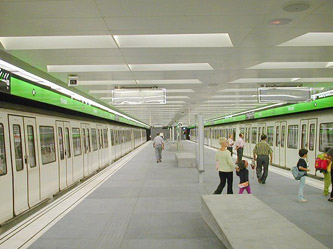
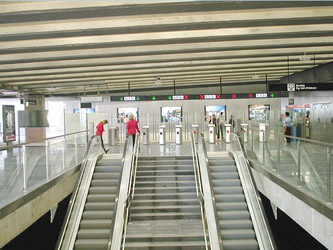
|
| |
Valldaura
|
|
21-09-2001 |
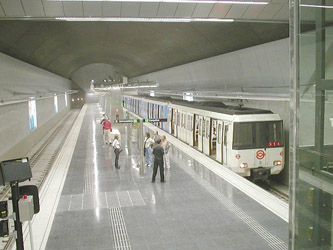
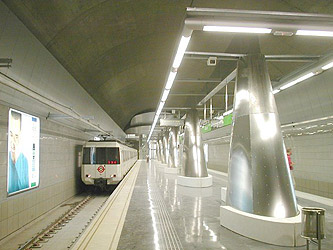
|
| |
Canyelles
|
|
21-09-2001 |
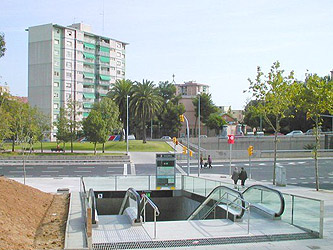
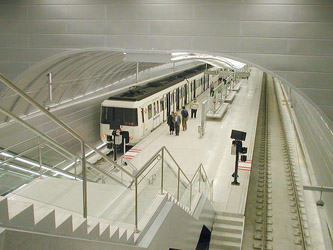
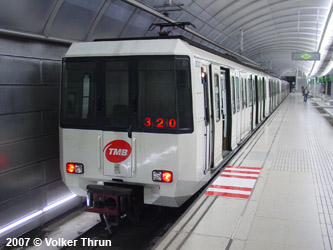
|
| |
Roquetes
|
|
04-10-2008
Until Oct.
1999 the name Roquetes which is a neighborhood on the foot of the
Collserola mountain range that surrounds Barcelona from north to west,
was used for the present Via Júlia station on line 4. The name
actually means 'small rocks'.
|
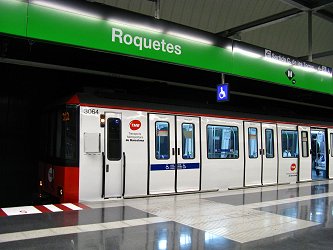
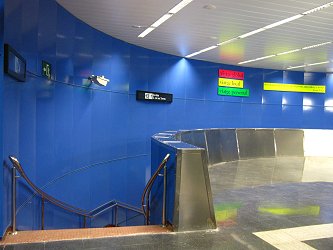
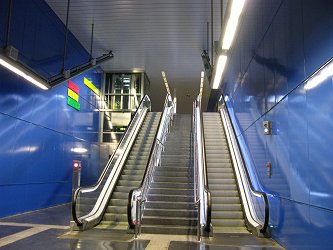
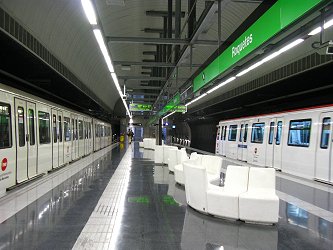
|
| |
Trinitat
Nova |


|
04-10-2008
|
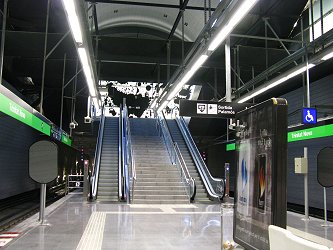
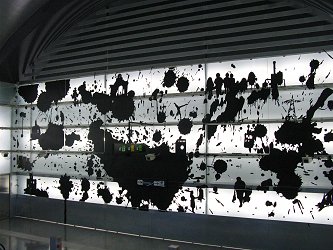
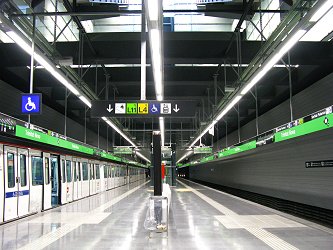
|
